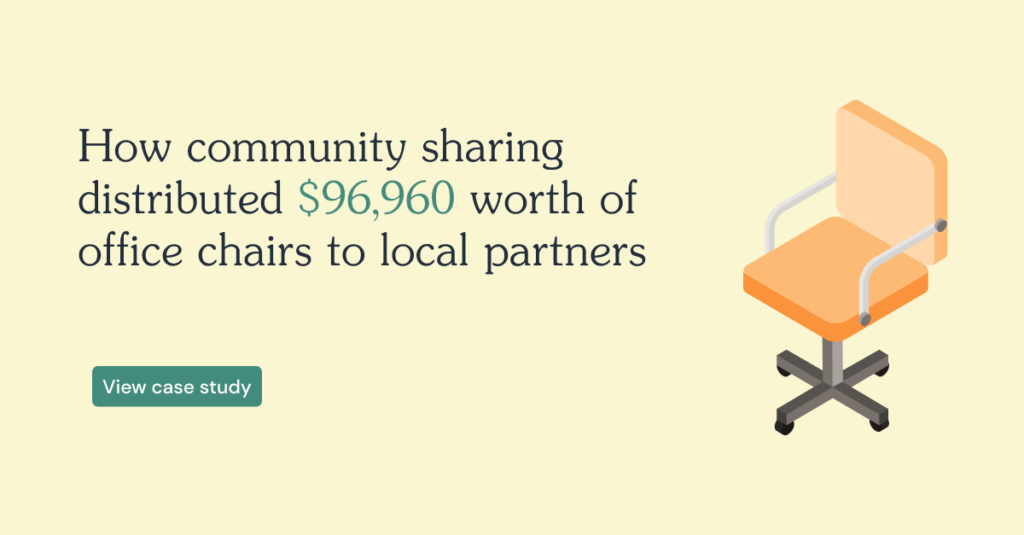Green Purchasing
Rheaply puts reuse on the table for every organization.
Green purchasing
Every organization needs to obtain goods and services to fulfill and maintain their operations. As our planet heats up and society considers the need to consume less, the traditional field of procurement has begun to adopt a more eco-friendly mindset. This attitude has become known as green purchasing.
What is green purchasing?
Green purchasing is the procurement of products and services that have a reduced effect on the health of humans and of our environment. Essentially, it’s bearing in mind the environmental impacts of practices such as raw material extraction, production, manufacturing, packaging, distribution, reuse, maintenance and disposal, when purchasing new products or services. The goal of green procurement is to promote conservation and responsible management of resources through the use of renewable or recycled materials and reducing waste wherever possible.
Organizations leverage green purchasing principles to address climate change and mitigate the over-exploitation of scarce resources. In general, this practice should lead to the procurement of goods and services that have a lower environmental impact compared to conventional ones. By studying the life cycle of various products and services, procurement teams can make more conscious purchases at every stage without contributing to pollution, biodiversity loss, or habitat destruction.
Sometimes referred to as green procurement or sustainable procurement, this practice not only has the potential to benefit the environment, but to also promote social responsibility and economic resilience. This framework is known as the triple bottom line, a popularized accounting framework. Green purchasing considers social policies of equality, international labor standards and human well-being throughout all stages of a supply chain. At the same time, green procurement leads to the saving of energy, waste and water over the lifetime of a product or service, which can provide significant financial benefits in the form of efficiency gains.
Green purchasing examples
While commonly associated with government green purchasing policies (GPP), there are many types of green procurement across both the public and private sector. Within the private sector, companies implement Voluntary Sustainability Standards (VSS), which are stakeholder-derived guidelines for incorporating sustainable policies, such as green purchasing. This often involves relying on certain certifications, like B Corp or Fair Trade, to ensure sustainable procurement. Regardless of industry, there are some examples of green procurement that can create economic and environmental value for an organization. Purchasing energy-savings light bulbs, serving organic food in the cafeteria, using non-toxic ink toner in the printer, and offering only post-consumer recycled paper products in the facilities are ways that any workplace can make greener procurement decisions.
When commissioning a new building, procurement teams with green purchasing in mind will prioritize powering them with renewables, such as wind and solar, and constructing and furnishing them with reclaimed materials. The ultimate form of green procurement is to avoid making a purchase altogether. Leveraging as many existing materials as possible to carry out business operations is the most sustainable choice. Organizations can rely on resource exchange networks to provide insight on what items are already owned that can be utilized in an upcoming project.

Benefits of green purchasing
Enacting a green purchasing policy can help a business improve from an environmental, social and financial perspective. Here are a few ways that green purchasing benefits an organization:
- Improves Employee Health & Safety – From the materials used to clean office spaces to the snacks in the employee break room, green procurement can ensure that employees are protected from unnecessary harms. Buying cleaning products that are EPA Safer Choice certified can protect employees from ingredients that can be detrimental to their health.
- Increases Profitability – Green purchasing creates plenty of cost savings opportunities by making energy use more efficient and reducing waste. While these practices are generally associated with their ability to reduce greenhouse gas emissions, studies show that renewable energy can actually be the cheapest form of energy.
- Improves Public Image – Consumers are becoming more eco-conscious and expect the businesses and institutions around them to act accordingly. In fact, 60% of consumers are more likely to purchase stock in a company that is perceived to be sustainable. Implementing a green procurement strategy that contributes to reducing the organization’s environmental impact can have serious positive effects on public image.
- Mitigates Risk – Taking extra precautions to purchase goods and services that do less environmental and social harm can reduce the organization’s risk exposure. Aside from avoiding lawsuits or malpractice concerns, green purchasing can help entities adhere to corporate or government regulations.
- Increases Employee Engagement – Instituting a company-wide policy on green purchasing can raise awareness of the organization’s commitment to sustainability. This can encourage employees to think more eco-consciously with every business decision.
Challenges of green procurement
While green purchasing clearly comes with a lot of benefits to the organization, it’s not always easy to implement a green procurement process. The main obstacle to a successful green purchasing strategy is a lack of knowledge about sustainable goods and services. Green purchasing can follow one of two approaches: product-based or supplier-based.
A product-based approach means that the procurement team is assessing the impacts of a specific product across its supply chain. Understanding the sustainability of a supply chain requires knowing the environmental impacts of different materials, energy sources, transportation methods, waste disposal systems, and more. This can be overwhelming for a procurement team to investigate without the proper resources.
In a supplier-based approach, the environmental and social risks that a particular supplier could inflict on the organization are considered. This can be a daunting task if procurement teams don’t leverage existing impact assessment certifications, like B Corp. Regardless of an organization’s approach, a successful green purchasing process is one that educates internal teams on sustainable practices in the supply chain and methods for evaluating supplier-compliance with internal procedures.
Importance of green purchasing
Leveraging green procurement guidelines in a private or public organization is an important step towards actioning on a sustainability plan. Prioritizing green procurement means purchasing more eco-friendly products and services that can limit the harmful impact of pollution and waste the organization generates. It also helps reach waste-reduction goals through more efficient and effective use of goods and materials that teams or other entities already have in existence, which also minimizes the exploitation of natural resources. By pursuing a green purchasing strategy, organizations can establish stronger supplier relationships by encouraging innovative practices that help both entities cut costs and become more sustainable.
Additionally, green procurement helps reduce liabilities and can help the organization gain a competitive advantage when applying for funding. It enables a business to be more transparent and signals a commitment to eco-friendly practices that creates more trust with internal and external stakeholders. Even though they’ve traditionally been leveraged by public institutions, sustainable procurement is aiding the private sector in its efforts to be a greener business by embedding sustainability-minded decisions at the forefront of every purchasing agreement.
Ultimately, green purchasing policies are one of the most effective ways to ensure that a business’ purchasing decisions are environmentally and socially responsible.


